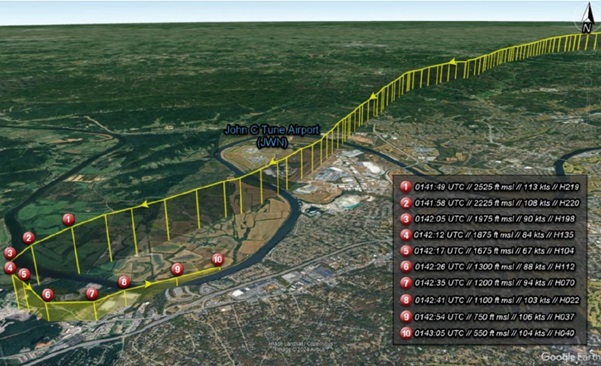Accident Report: Cantankerous components
What’s ailing the aileron?
A pilot flying a two-engine airplane (one that has an engine mounted on each wing) spends much of the training flying on just one engine while learning how to handle the condition known as asymmetrical thrust. This state of flight, if not managed carefully, can lead to the problems I mentioned—with the aircraft’s behavior made more aggressive by having one engine thrusting the aircraft forward while the other is dragging it backward.
What asymmetrical flight profiles might you face in the aircraft you fly? I once saw an entire private pilot ground school class fall silent after the instructor asked the students to describe how a single-engine trainer would respond if only one flap, say the left flap, came down when the switch was deployed.
Well, for starters the left flap would increase the angle of attack—that is, it would increase the lift—on the left wing relative to the right wing, rolling the airplane to the right. More lift means more (induced) drag from that down flap, so simultaneously with the right roll the airplane would yaw to the left. Even sitting here at my desk thinking about it, I want to push a right rudder pedal and roll out some of that right bank, and maybe lower the nose just a bit to be on the safe side.
It is good practice for pilots to have some awareness of the maintenance status of the aircraft they fly when trouble arises.Then what? Unless you can safely and successfully retract the down flap, maneuvering for landing while flying cross-controlled just to maintain control is going to be complicated.
Ailerons don’t move together like flaps but in opposite directions (in some cases, in different amounts) to manage roll. But they, too, can become a cantankerous component.
On May 2, 2019, a Cirrus SR20 single-engine airplane, which had been airborne for about 32 minutes after takeoff from Fort Worth Meacham International Airport, was flying its fourth circuit of the traffic pattern of Texas’s Mineral Wells Regional Airport when the pilot felt a brief shudder while on the downwind leg, according to a preliminary NTSB accident report.
The pilot and passenger noticed the right aileron “fluttering,” so the pilot immediately turned toward a final approach—at which point the aileron came off the airplane. According to the report, “The pilot reported that he still had roll control of the airplane after the right aileron separated and that an uneventful landing was completed on Runway 31.” The missing aileron was recovered on the approach course about a half-mile from the runway threshold and was retained for further examination—along with a hinge bolt and other components, including a fractured strand of safety wire, the report said.
Another anticlimactic occurrence associated with an ailing aileron is a vivid reminder that it is good practice for pilots to have some awareness of the maintenance status of the aircraft they fly when trouble arises. On February 15, 2011, the right aileron of a Beechcraft King Air E90 twin turboprop flew off the wing during a turn at Flight Level 180 near Des Moines, Iowa. Again, the airplane remained controllable and landed without incident.
In this case the NTSB attributed the mishap involving an aircraft just out of the repair shop to “improper installation of the right aileron by maintenance personnel.”
Here’s a question for the astute student pilot: Given the accident-free, perfectly safe outcomes of the two incidents described here, why did they both become the subjects of NTSB accident reports?
The answer is that the scenario that occurred in both evnets is a practical example of a situation covered by a regulation you studied in ground school: The “immediate reporting” requirement of NTSB Section 830.5 mandates that the operator of a civil aircraft notify the nearest National Transportation Safety Board office of an aircraft accident, or a number of “listed serious incidents,” one of which is “flight control system malfunction or failure.”



